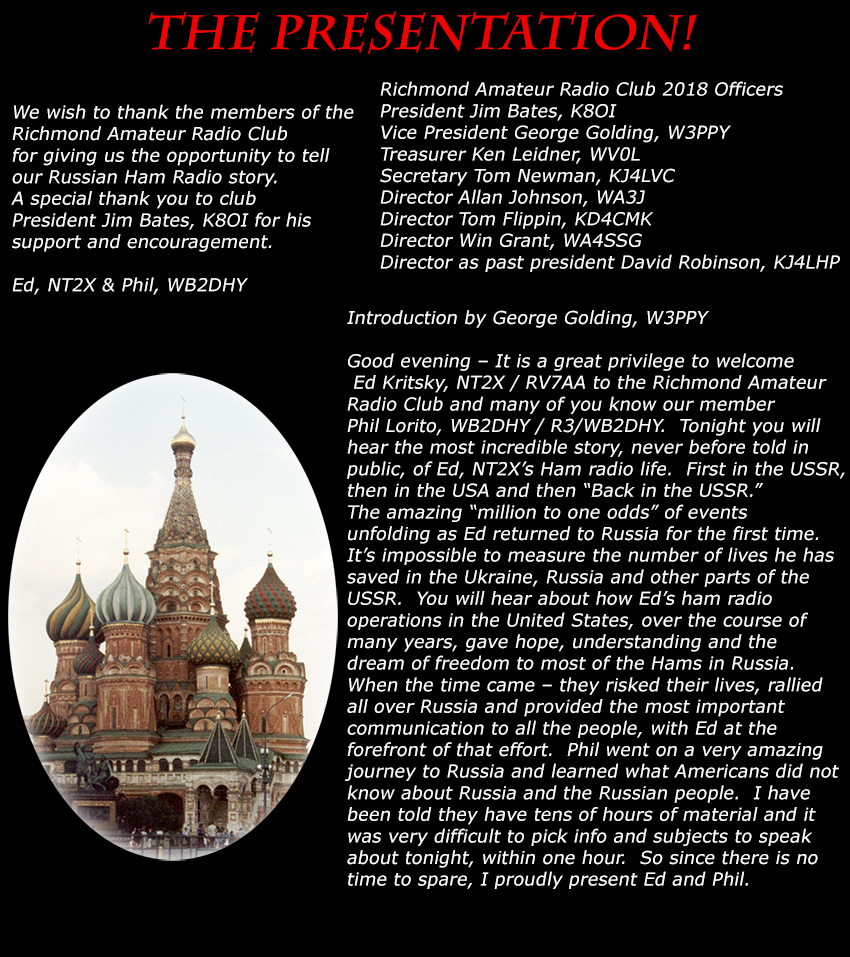
On June 8, 2018 the Richmond Amateur Radio Club (RARC) of Richmond, Virginia invited and hosted a one-hour presentation by Edward Kritsky, NT2X - RV7AA and Philip Lorito, WB2DHY - R3/WB2DHY. The presentation's focus was Russian Ham radio from Post WWII up into the mid 1990's. Ed revealed and relived what Ham radio life was like for him and all the Hams in the USSR under the totally controlling, violent and corrupt Communist regime. Many of his disclosures and photos, including personal stories, were being made public for the first time. Stunning and shocking, with the KGB always looming over Ed and his activies. An amazing glimpse of how Ed, one of the very few Russian speaking Ham radio operators in the U.S.A., impacted the Russian Ham radio community during the dark days of Communism.
While traveling with Ed on a number of business trips to Russia as well as one solo trip, Phil was one of the first American citizens to learn about the new Russia immediately after and during its earliest days of transition from Communism to a Democratic capitalist system. His experiences as an American Ham radio operator in Russia are remarkable. His newly found understanding of Russia, its long tragic history, its people, along with their brilliance, courage and sense of humor is remarkably striking.
Both Ed and Phil have hours upon hours of stories and history to speak about. Deciding what to include within a one-hour presentation was the greatest challenge.
The following two documents were handed out prior to the start of the presentation. Please read them to better understand about Ed, NT2X. Be aware of the part he played in stopping the hard-line Russian Communist coup attempt that set out to destroy the Russian people's hopes and dreams of freedom. Get a view of Ed's remarkable humanitarian efforts and work over nearly a decade of saving lives in the USSR.
CLICK HERE! - New York Daily News - June, 1992
Non-Hams please CLICK HERE for a GLOSSARY OF HAM RADIO TERMINOLOGY
To Learn About Russia's Most Famous Ham Radio Operator CLICKING HERE!
All images can be enlarged by clicking on them and viewing with Adobe Reader!
Ed: It's an honor and privilege to be invited by the Richmond Amateur Radio Club to speak this evening about my life, Russia and Ham radio. In the early 1990's, Phil and I started to explore business opportunities that turned into a remarkable Russian Ham radio journey for both of us. I was returning to a place I had left and never thought I would go back to. For Phil, he experienced Russian people, their incredible history and a wonderful culture he never expected.
Phil: 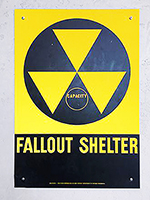 As a child of the 1950's - 1960's Cold War, fear, distrust and near hatred of that dark place known as Russia was my image.
As a child of the 1950's - 1960's Cold War, fear, distrust and near hatred of that dark place known as Russia was my image. 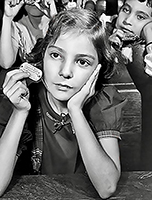 In constant fear of Russian nuclear attack, people built Fallout Shelters in their backyards. My school had a fully equipped Fall Out shelter in the basement. We drilled on when seeing a bright light flash, to duck under our desks and cover our heads. We were issued Dog Tags so the government could identify our bodies. Radio, TV and Newspapers reported the historic events of that time, instilled a justified dread of Communism in American youth. The generation before mine fought Communism in Korea, my generation fought it in Vietnam. I stepped forward to do my part and Ed, NT2X fought Communism with Ham Radio.
In constant fear of Russian nuclear attack, people built Fallout Shelters in their backyards. My school had a fully equipped Fall Out shelter in the basement. We drilled on when seeing a bright light flash, to duck under our desks and cover our heads. We were issued Dog Tags so the government could identify our bodies. Radio, TV and Newspapers reported the historic events of that time, instilled a justified dread of Communism in American youth. The generation before mine fought Communism in Korea, my generation fought it in Vietnam. I stepped forward to do my part and Ed, NT2X fought Communism with Ham Radio.
![]()
Ed: I was born in 1960 in Leningrad now called St. Petersburg.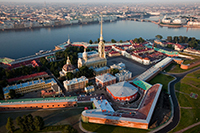 My mother taught English to high school students, my father taught Russian language and literature. I started to learn English at 7 years old, not knowing how important this was later in my American life and Ham radio. In 1979 under the pressure from the United States and other nations, Russia's borders opened slightly, enough for my Jewish family and me to leave. With no passport to come back, carrying our worldly possessions which would fit in a few suitcases, renouncing our Soviet citizenship and paying an enormous exit fee, we left. My father had passed away prior to our exit.
My mother taught English to high school students, my father taught Russian language and literature. I started to learn English at 7 years old, not knowing how important this was later in my American life and Ham radio. In 1979 under the pressure from the United States and other nations, Russia's borders opened slightly, enough for my Jewish family and me to leave. With no passport to come back, carrying our worldly possessions which would fit in a few suitcases, renouncing our Soviet citizenship and paying an enormous exit fee, we left. My father had passed away prior to our exit. 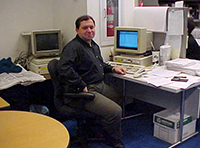 We were reunited with family members in New York. For 20 years I worked as a computer programmer in NY financial industry.
We were reunited with family members in New York. For 20 years I worked as a computer programmer in NY financial industry. 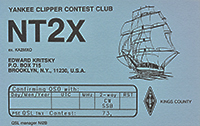 I proudly became an American citizen in 1985 and it's the only citizenship I possess and there is none better on this planet. I got my American Novice license in 1981 and upgraded to my current Extra call NT2X in 1984. I was fortunate to operate from a number of DX locations over my 40 years as a ham. Those interested are invited to look up my QRZ.com entry.
I proudly became an American citizen in 1985 and it's the only citizenship I possess and there is none better on this planet. I got my American Novice license in 1981 and upgraded to my current Extra call NT2X in 1984. I was fortunate to operate from a number of DX locations over my 40 years as a ham. Those interested are invited to look up my QRZ.com entry.
At 14 years old I was introduced to Ham radio at a summer Russian radio club camp. I was hooked for life! As a teen the only important things in my life were school, food, sleep and Ham radio, in reverse order. In the USSR Ham radio clubs were the center of ham activities. Many clubs were part of high schools, universities, work places and Young Pioneers centers. Young Pioneers were similar to American Boy Scouts. The journey starts with passing a short wave listener's license test. To get on the air from a club station one had to possess at least a shortwave listener call. It entitled you to operate a club station and send out SWL QSL cards. 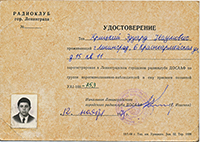
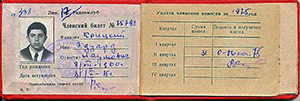 It was not a bad idea overall. To become a successful operator one had to be patient, learn about propagation; listen to the real hams speaking to each other, to learn the etiquette and good operating manners from others. In the beginning, I did not know Morse code and was quite happy with listening to the Soviet stations working each other and the world on SSB and AM. My Young Pioneer House was 1,000 feet from where I lived. If the lights were on, that meant the station was on the air and I would run over. That station call was UK1BCG, later to become UZ1AWL.
It was not a bad idea overall. To become a successful operator one had to be patient, learn about propagation; listen to the real hams speaking to each other, to learn the etiquette and good operating manners from others. In the beginning, I did not know Morse code and was quite happy with listening to the Soviet stations working each other and the world on SSB and AM. My Young Pioneer House was 1,000 feet from where I lived. If the lights were on, that meant the station was on the air and I would run over. That station call was UK1BCG, later to become UZ1AWL. 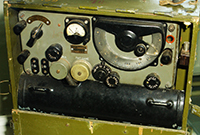 This is a photo of the radio I operated. These were made in the 50's and 60's and were once used by the Russian Army. It had no SSB, only AM, but some operators actually could read what the SSB station was saying without the 2nd heterodyne to turn the squawking sounds into intelligible speech. Not me.
This is a photo of the radio I operated. These were made in the 50's and 60's and were once used by the Russian Army. It had no SSB, only AM, but some operators actually could read what the SSB station was saying without the 2nd heterodyne to turn the squawking sounds into intelligible speech. Not me.
![]()
This is also the station I got my first VHF contesting experience as well. You are looking at the radio. This is modified Russian Army tank equipment from the 40's or 50's, where you had to swap quartz crystals in order to QSY to other 2 meter or 70 cm frequencies. 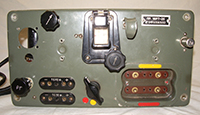
All Hams and radio clubs were part of the D.O.S.A.A.F. This stood for: Volunteer Society Assisting Army, Air Force and Navy." The Soviet State viewed Hams as an asset pool of radio operators for the USSR's military. I left Russia before I got drafted into the military.
![]()
QSL Cards were SWL's source of pride. In those days I didn't have my own. There was no place I could go to get them printed. Printing was something done for official purposes. These were the days before copy machines and personal computers, remember. A DOSAAF-affiliated club could easily order them, but to do it privately, you had to have BIG connections or use standard-issue QSLs provided by the Central Radio Club of the USSR. 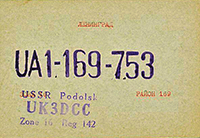 You put your stamp on them and it became your card. The stamp took few months to arrive, again ordered through the Central Radio Club in Moscow. My cards were initially hand made, using a piece of paper and a typewriter we owned. The 'UA' letters were carefully cut from the pencil eraser piece of rubber, the rest of the digits were purchased at the office supply store.
You put your stamp on them and it became your card. The stamp took few months to arrive, again ordered through the Central Radio Club in Moscow. My cards were initially hand made, using a piece of paper and a typewriter we owned. The 'UA' letters were carefully cut from the pencil eraser piece of rubber, the rest of the digits were purchased at the office supply store.
Here is a USSR SWL card Phil received.![]()
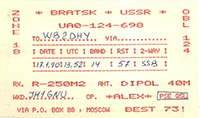
![]()
In 1978, at the age of 18, after years of being a Short Wave listener, struggling to learn Morse Code and studying technical material, I took my Ham radio examination. I took the test with a number of teen friends. We all passed and were jumping for joy. It was the happiest, exciting days of my life! As the weeks went by, all my friends received their new licenses. I didn't. More time went by, I needed to find out what the problem was. I did. I was denied a license. Committee of State Security, better known as the KGB did not approve of me. At 18 years old they apparently had a folder on me. I wasn't an "Enemy of the State," but I did have my late dad's relatives living in the United States. They saw me as a teenage threat to the security of the Soviet Union. I was devastated and traumatized by the experience. My dreams of being a Ham radio operator, after working so hard toward that goal for years, dreaming every day about operating my own ham station had vanished forever! I couldn't be consoled. I didn't make it public knowledge, but told few people I trusted. When my mother spoke of leaving Russia - my Ham radio pain gave me little to quarrel against the decision.
Phil: I have a Message for the members of Richmond Amateur Radio Club from Rick Palm, K1CE of the American Radio Relay League who traveled to Moscow in the early 1990's at the request of Ed, NT2X who arranged details. Rick helped Russian Hams develop and implement the Russian Amateur Radio Emergency Service, still operating to this day, which is a mirror image of the ARRL's ARES.
"It was my great pleasure and privilege to work with Ed, NT2X and also Andy, RW3AH, Andy, UA3AB, and Romeo, 3W3RR on the ARES project in Russia during the last days of Communism, back in 1991. They were as excited about the project as I was. I spoke at a Ham radio conference in Leningrad, met with ministers from the government's telecommunication administration, and met with the Box 88 staff. The real credit goes to Ed for arranging everything and getting us together. Hearing from Phil this week brought back a lot of wonderful memories from that trip. I was happy to hear that the Russian ARES program is alive and well. After I got back home, I was called in to be interviewed by an agent from the CIA. Two weeks later was the historic failed coup attempt, and the resulting end of Communism in Russia and the USSR. Those were heady days! Thank you, Phil and Ed, and thanks to all of the members of RARC and their guests in the audience for your interest in ARES in Russia!
Phil: In 1991 Gorbachev, the new President of the USSR made an effort to create better relations with the United States. The Russian people were boiling over with resentment towards the old 1950's style Communist form of government. He ordered "Glasnost" meaning openness and "Perestroika" meaning restructuring. 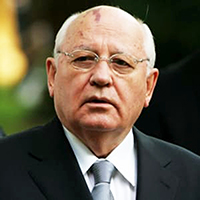 Restructuring included privatizing government owned business and allowing foreign partnerships and western business investment. Russia was open to travel for people from the United States. This didn't meet with the approval of the hard line Communists. Gorbachev was playing a very dangerous game! Seeing a business opportunity, I contacted Ed, we started a consultant firm to bring American business and investment to Russia. The first necessary thing to do was for Ed to travel to Russia and do an exploratory study of business possibilities. Ed was understandably reluctant, but showed great courage knowing the KGB already had a file on him. He went to Russia. Within the first few days in Moscow, the Russian Communist hardliners kidnapped President Gorbachev and his wife and attempted to overthrow the current government and return to "Iron Grip" Communist control.
Restructuring included privatizing government owned business and allowing foreign partnerships and western business investment. Russia was open to travel for people from the United States. This didn't meet with the approval of the hard line Communists. Gorbachev was playing a very dangerous game! Seeing a business opportunity, I contacted Ed, we started a consultant firm to bring American business and investment to Russia. The first necessary thing to do was for Ed to travel to Russia and do an exploratory study of business possibilities. Ed was understandably reluctant, but showed great courage knowing the KGB already had a file on him. He went to Russia. Within the first few days in Moscow, the Russian Communist hardliners kidnapped President Gorbachev and his wife and attempted to overthrow the current government and return to "Iron Grip" Communist control. You can read the history of this event in tonight's handout of Ed's brave role in the Coup, operating UA3A/NT2X (November 1991 QST.)
You can read the history of this event in tonight's handout of Ed's brave role in the Coup, operating UA3A/NT2X (November 1991 QST.) 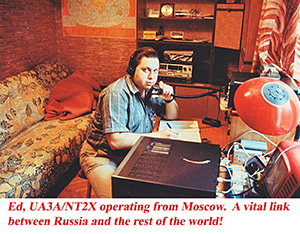 Had the Coup succeeded, Ed along with all the Russian Hams who participated would have most likely been dealt with very harshly - long prison or death sentences for treason. Ed, NT2X could have been labeled an "American spy" and imprisoned or worse. He's too modest to accept much credit or accolades but he fought for freedom with Russian Hams for the people of Russia. He risked everything including his life for democracy. Democracy in Russia and the defeat of Communism for which so many American lives had been forfeited. Shortly thereafter, the new Russian Federation honored Ed, NT2X by issuing him a Russian Ham radio license with the call sign "RV7AA." Ed was the first non-Russian citizen ever granted a Ham license in Russia, the license so unfairly denied him as a teenager!
Had the Coup succeeded, Ed along with all the Russian Hams who participated would have most likely been dealt with very harshly - long prison or death sentences for treason. Ed, NT2X could have been labeled an "American spy" and imprisoned or worse. He's too modest to accept much credit or accolades but he fought for freedom with Russian Hams for the people of Russia. He risked everything including his life for democracy. Democracy in Russia and the defeat of Communism for which so many American lives had been forfeited. Shortly thereafter, the new Russian Federation honored Ed, NT2X by issuing him a Russian Ham radio license with the call sign "RV7AA." Ed was the first non-Russian citizen ever granted a Ham license in Russia, the license so unfairly denied him as a teenager!
![]()
I was excited about making my first trip to Russia, my XYL, Louisa, KB2NKQ was a nervous wreck! I had applied for permission to operate Ham radio in Russian. 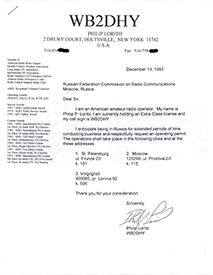 Here is the cover letter that went with my application. I was thrilled when I learned my application was approved! My Russian Ham license.
Here is the cover letter that went with my application. I was thrilled when I learned my application was approved! My Russian Ham license. 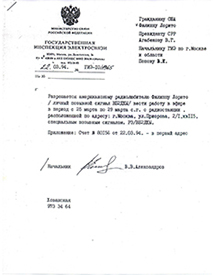 Ed phoned me and said to be sure to bring a First Aid Kit. He told me to bring Hydrogen Peroxide, Rubbing Alcohol, Band Aids, Aspirin, Gauze, Medical Tape and so on. He said, "Phil, there are no CVS or Rite Aid stores in Russia. And, the hospitals are 40 years behind the U.S. They don't have CAT Scans or MRIs, they have X-Ray machines. They don't have modern medical supplies and drugs. There is a long wait for an ambulance. Lets hope we don't get into a car accident." I asked about hotel reservations. Ed told me there are very few hotels in Russia and they are very expensive. Very few businessmen traveled there, tourism is very limited, and its best to be a guest in a Russian home. We were staying at Jacob's UA1FA's apartment. Welcome to Russia of 1992.
Ed phoned me and said to be sure to bring a First Aid Kit. He told me to bring Hydrogen Peroxide, Rubbing Alcohol, Band Aids, Aspirin, Gauze, Medical Tape and so on. He said, "Phil, there are no CVS or Rite Aid stores in Russia. And, the hospitals are 40 years behind the U.S. They don't have CAT Scans or MRIs, they have X-Ray machines. They don't have modern medical supplies and drugs. There is a long wait for an ambulance. Lets hope we don't get into a car accident." I asked about hotel reservations. Ed told me there are very few hotels in Russia and they are very expensive. Very few businessmen traveled there, tourism is very limited, and its best to be a guest in a Russian home. We were staying at Jacob's UA1FA's apartment. Welcome to Russia of 1992.
![]()
Ed: Post WWII Ham radio in the USSR under the Communist "Iron Fist" control was like nothing you could imagine. The USSR hams were not permitted to have any QSO's with "capitalistic countries." To prove you were not in contact with the proverbial enemy capitalists, USSR hams had their logs inspected every six months. This limitation was lifted in the early 70's. All QSL's in and out of the USSR were handled by the government controlled CRC, Central Radio Club, and they used the central address, "Box 88, Moscow." If a banned country sent you a QSL card via Box 88, you risked license suspension. In the 60's and early 70's QSO's were limited to Soviet, Soviet block Eastern European countries and nations friendly with the USSR. If caught dealing with direct QSLing your license was immediately suspended for three months or worse. You could never receive IRC or money in the mail for QSLing. If anyone possessed more than $25.00 they were considered a major criminal with the potential of a long prison sentence. Getting DX cards in the USSR was not easy! DXCC was initially impossible and the government came up with awards for working different areas of the USSR and so-called friendly nations.
Back in the 50's if you were in the Russian military you had to surrender your ham license and/or could not apply for one. The prohibition went into effect in 1949 when the Military Chief of the Soviet Long Range Aviation, by the name of Nick Baikuzov, UA3AG/am went on the air during the inspection trip around the country (or so the legend goes). The Soviet counterintelligence people thought that American Central Intelligence Agency would derive intel value from his announced stopover places. You could not have a callsign if you had any sort of work or service security clearance.
Keeping track of Ham radio happenings in the USSR was never simple. The only 2 sources of official information were the "Radio Magazine," articles of which were for many years translated by W4KM for the League and weekly
 "On The Ham Bands" column in the all-Union newspaper "Soviet Patriot."
"On The Ham Bands" column in the all-Union newspaper "Soviet Patriot." 
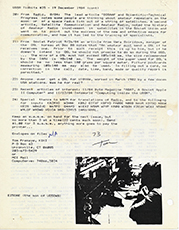 Anything else was derived off the air. Language was a major obstacle (it still is, but now we have Google and even Google Translator). Tom Frenaye, K1KI, was publishing a paper bulletin about Ham happenings in Russia. It was mailed to a number of U.S. hams interested in the subject. Here's a sample of what it looked like.
Anything else was derived off the air. Language was a major obstacle (it still is, but now we have Google and even Google Translator). Tom Frenaye, K1KI, was publishing a paper bulletin about Ham happenings in Russia. It was mailed to a number of U.S. hams interested in the subject. Here's a sample of what it looked like.
![]()
Phil: 1992 - Business preparation for Russia - I thought it would be a great idea to meet with some Russian officials posted in New York to discuss our Russian business plan. Ed was not too sure! I went ahead and phoned the Permanent Mission of the Russian Federation to the United Nations. 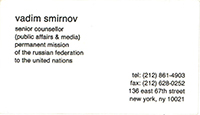 I easily secured an appointment with Vadim Smirnov, Senior Counsellor of Public Affairs. Meeting Ed in NYC, we stood in front of the Russian Mission on East 67th Street. A very imposing gray building, with a 10 foot black, spear tipped steel fence surround it. Ed paused and said to me, "I don't think I should go in there! Phil, I left Russia without serving my two years in the Russia Army. It was a bureaucratic error, at my age I should not have been allowed to leave Russia until after my military service. I'm a Russian Draft Dodger! Once I go in there, I am in official Russian territory." I said, "Ed, they want to have a good relationship with the United States. They're not going to kidnap an American citizen on East 67th Street. I am not leaving this joint without you! Now what? They kidnapped two Americans in Manhattan?" We pressed the intercom button, announced who we were and the electric front gate opened. We stepped into Russian Territory, with the steel gate slamming shut behind us with the sound of a prison jail cell. They ushered us into a small waiting room. Ed eyed the surveillance camera mounted on the wall and whispered to me, "They are watching us, they are probably listening to us, so keep your mouth shut!" We met with Mr. Smirnov, charming, friendly and excited about what we had to say. He prepared a list for us of people we should consider meeting with in Moscow. We concluded our meeting with handshakes and took our leave. Once on the sidewalk, the steel gate slammed shut behind us, Ed smiled for the first time that day and said, "Lets get some lunch!"
I easily secured an appointment with Vadim Smirnov, Senior Counsellor of Public Affairs. Meeting Ed in NYC, we stood in front of the Russian Mission on East 67th Street. A very imposing gray building, with a 10 foot black, spear tipped steel fence surround it. Ed paused and said to me, "I don't think I should go in there! Phil, I left Russia without serving my two years in the Russia Army. It was a bureaucratic error, at my age I should not have been allowed to leave Russia until after my military service. I'm a Russian Draft Dodger! Once I go in there, I am in official Russian territory." I said, "Ed, they want to have a good relationship with the United States. They're not going to kidnap an American citizen on East 67th Street. I am not leaving this joint without you! Now what? They kidnapped two Americans in Manhattan?" We pressed the intercom button, announced who we were and the electric front gate opened. We stepped into Russian Territory, with the steel gate slamming shut behind us with the sound of a prison jail cell. They ushered us into a small waiting room. Ed eyed the surveillance camera mounted on the wall and whispered to me, "They are watching us, they are probably listening to us, so keep your mouth shut!" We met with Mr. Smirnov, charming, friendly and excited about what we had to say. He prepared a list for us of people we should consider meeting with in Moscow. We concluded our meeting with handshakes and took our leave. Once on the sidewalk, the steel gate slammed shut behind us, Ed smiled for the first time that day and said, "Lets get some lunch!"
![]()
Ed: The USSR QSL Bureau and CRC occupied an entire building in Moscow and had a sizeable staff. It also had an actual "P.O. Box." The late Leo, UA3DR took me in to the Central Post Office to show me the infamous Box 88. 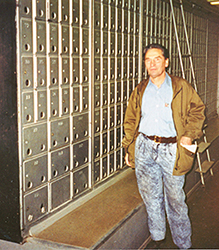
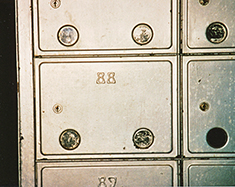 This is the first time photos of Box 88 have ever been shown in public. This is where incoming mail from the world over would be deposited for the CRC, and subsequently, to the amateurs of the Soviet Union. Any QSL's that came with money or IRCs were seized and taken by the CRC. IRC's were used for CRC's outgoing postage and the cash was deposited in the CRC bank account and used by functionaries who traveled to IARU Conferences abroad. Russian hams never saw any of this. Nothing went to waste.
This is the first time photos of Box 88 have ever been shown in public. This is where incoming mail from the world over would be deposited for the CRC, and subsequently, to the amateurs of the Soviet Union. Any QSL's that came with money or IRCs were seized and taken by the CRC. IRC's were used for CRC's outgoing postage and the cash was deposited in the CRC bank account and used by functionaries who traveled to IARU Conferences abroad. Russian hams never saw any of this. Nothing went to waste.  Stamps were cut off the envelopes and the famous Ernst Krenkel, RAEM (who was also the President of the Soviet Philatelic Society) would periodically come by and pick them up for his own collection. This happened in the 60's and apparently continued into the 70's and beyond.
Stamps were cut off the envelopes and the famous Ernst Krenkel, RAEM (who was also the President of the Soviet Philatelic Society) would periodically come by and pick them up for his own collection. This happened in the 60's and apparently continued into the 70's and beyond.
![]()
In the late 1980's I came up with a way to by-pass Box 88. There were small local regional QSL Bureaus throughout the USSR. They used these for USSR Hams to QSL each other. These addresses were published only in a single Russian-language publication, and were not known outside of the USSR. 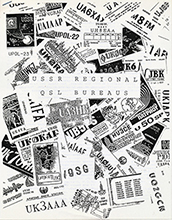
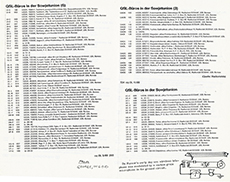 It took me a few years of searching and collecting information from various sources to put together a complete list. I later released the list world wide. Italian "Radio Rivista" the major Ham journal of Italy published the list naming me as the source. This notice of direct USSR QSLing spread like wild fire around the Ham radio world. Years later, a Russian Ham buddy told me that this drove the CRC nuts! They were beginning to lose their grip and control of Ham QSLing. He told me they were screaming "Who is NT2X!" How did he get this secret list? Who paid him to do this? He told me, "Ed, you made them absolutely crazy!" I had a good laugh.
It took me a few years of searching and collecting information from various sources to put together a complete list. I later released the list world wide. Italian "Radio Rivista" the major Ham journal of Italy published the list naming me as the source. This notice of direct USSR QSLing spread like wild fire around the Ham radio world. Years later, a Russian Ham buddy told me that this drove the CRC nuts! They were beginning to lose their grip and control of Ham QSLing. He told me they were screaming "Who is NT2X!" How did he get this secret list? Who paid him to do this? He told me, "Ed, you made them absolutely crazy!" I had a good laugh.
![]()
Phil: My first trip to Russia. 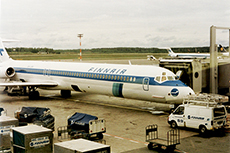 We flew from JFK, NY to Helsinki and then on to St. Petersburg, Russia on FinnAir. We arrived in St. Petersburg and deplaned onto the tarmac and found ourselves walking about 50 yards to the terminal building entrance. Looking up, there was a very huge "Crested Hammer & Sickle." We walked between two columns of Russian Army soldiers, ten feet apart, with AK-47's at the ready. We claimed our baggage and got through Customs. We were met by Jacob, UA1FA and a dozen other Hams were there to greet Ed. Some took a day off from work. After hugs and laughter I was introduced to everyone.
We flew from JFK, NY to Helsinki and then on to St. Petersburg, Russia on FinnAir. We arrived in St. Petersburg and deplaned onto the tarmac and found ourselves walking about 50 yards to the terminal building entrance. Looking up, there was a very huge "Crested Hammer & Sickle." We walked between two columns of Russian Army soldiers, ten feet apart, with AK-47's at the ready. We claimed our baggage and got through Customs. We were met by Jacob, UA1FA and a dozen other Hams were there to greet Ed. Some took a day off from work. After hugs and laughter I was introduced to everyone. 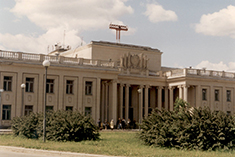 This is a photo looking back at the front of the airport with another "Crested Hammer & Sickle." We drove to Jacob's apartment building in St. Petersburg. It was shocking to see how badly the roads were potholed. Our driver had to maneuver the car constantly left and right to avoid the potholes. We arrived at his apartment building, a four-sided square. You drove through an archway to an inner courtyard. I was stunned at how dilapidated the buildings were. The center of the courtyard must have once been very beautiful with lawns and flower gardens and a children's playground. Now, it was all muddy dirt, the playground was destroyed, with only one chain connected to a piece of wood that used to be a swing. With no upkeep the inner area of the building was a disaster. The entrance to the apartment building had a single light, which was a light bulb screwed into a socket hanging by its wire. The door had several glass panes missing and pieces of plywood replaced the glass. Jacob's apartment was on the 10th floor. The elevators were out of order. Ed and I carried two heavy suitcases each up 10 flights of stairs. Half the elevators in St. Petersburg only work half the time. It was mind boggling that this was the Russia that our generation so feared. A country literally falling apart at the seams. Russian frustration at having all their wealth and the nation's resources being plowed into the military, space program and the pockets of an elite corrupted Communist inner group. The real stunner was entering Jacob's apartment. The carpet was plush, the apartment was spotless, beautifully decorated, wonderfully furnished. On Jacob's big screen HDTV, I couldn't believe my eyes. It was CNN from Atlanta. I met Jacob's wife, Natasha, a warm and sweet woman. Seated in Natasha's kitchen, my first Russian dinner was a tasty hot bowl of Georgian Stew.
This is a photo looking back at the front of the airport with another "Crested Hammer & Sickle." We drove to Jacob's apartment building in St. Petersburg. It was shocking to see how badly the roads were potholed. Our driver had to maneuver the car constantly left and right to avoid the potholes. We arrived at his apartment building, a four-sided square. You drove through an archway to an inner courtyard. I was stunned at how dilapidated the buildings were. The center of the courtyard must have once been very beautiful with lawns and flower gardens and a children's playground. Now, it was all muddy dirt, the playground was destroyed, with only one chain connected to a piece of wood that used to be a swing. With no upkeep the inner area of the building was a disaster. The entrance to the apartment building had a single light, which was a light bulb screwed into a socket hanging by its wire. The door had several glass panes missing and pieces of plywood replaced the glass. Jacob's apartment was on the 10th floor. The elevators were out of order. Ed and I carried two heavy suitcases each up 10 flights of stairs. Half the elevators in St. Petersburg only work half the time. It was mind boggling that this was the Russia that our generation so feared. A country literally falling apart at the seams. Russian frustration at having all their wealth and the nation's resources being plowed into the military, space program and the pockets of an elite corrupted Communist inner group. The real stunner was entering Jacob's apartment. The carpet was plush, the apartment was spotless, beautifully decorated, wonderfully furnished. On Jacob's big screen HDTV, I couldn't believe my eyes. It was CNN from Atlanta. I met Jacob's wife, Natasha, a warm and sweet woman. Seated in Natasha's kitchen, my first Russian dinner was a tasty hot bowl of Georgian Stew.  The next day, a cold and cloudy day, St. Petersburg being at the same latitude as Alaska, Natasha wanted me to walk with her, to show me her small neighborhood Russian Orthodox Church.
The next day, a cold and cloudy day, St. Petersburg being at the same latitude as Alaska, Natasha wanted me to walk with her, to show me her small neighborhood Russian Orthodox Church. 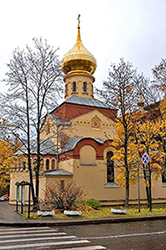 The church was amazing with religious paintings on the ceiling, walls and Icons everywhere. I recall how happy she was about the change in Russia that Hams of Russia had brought about. She said, "Now that the Communists are not in power, people might no longer be afraid to go to the church." As Americans, religious freedom bred into our very blood, to hear a statement like that was so profound - it is something I'll never forget. Without it being an exaggeration, Russian Hams helped deliver religious freedom to Russia (I would like to show the jewelry box she gave me.) That evening a discussion was held about religion in Russia. To know how badly Jews were persecuted in Russia was an eye opener. Both Jacob and Natasha were born in Russia. Her Russian Passport read "Russian" and his read "Jewish." After the 1967 Middle East war where America's ally Israel defeated the armies of several Arab States, USSR Hams were banned from having QSOs with 4X / 4Z Israeli stations.
The church was amazing with religious paintings on the ceiling, walls and Icons everywhere. I recall how happy she was about the change in Russia that Hams of Russia had brought about. She said, "Now that the Communists are not in power, people might no longer be afraid to go to the church." As Americans, religious freedom bred into our very blood, to hear a statement like that was so profound - it is something I'll never forget. Without it being an exaggeration, Russian Hams helped deliver religious freedom to Russia (I would like to show the jewelry box she gave me.) That evening a discussion was held about religion in Russia. To know how badly Jews were persecuted in Russia was an eye opener. Both Jacob and Natasha were born in Russia. Her Russian Passport read "Russian" and his read "Jewish." After the 1967 Middle East war where America's ally Israel defeated the armies of several Arab States, USSR Hams were banned from having QSOs with 4X / 4Z Israeli stations.
![]()
Ed: NT2X was on the air in the 1980's. With a big beam on the roof of my apartment building and a linear amp I was being heard well and was the only active Russian speaking Ham transmitting from the U.S. 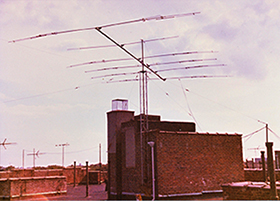 Soviets could not really provide more than QSO and station data, name and QTH on the air. Technical discussions were also permitted. Discussing anything beyond, on any subject matter would be a cause for a 3 month station shutdown. There were at least 3 groups of "listeners" to any activity: Soviet equivalent of the FCC field offices, central clubs monitoring services, and a group of "official observers" that would sign their callsign /K (K meaning Kontrol). All looking for on the air violations by Soviet stations.
Soviets could not really provide more than QSO and station data, name and QTH on the air. Technical discussions were also permitted. Discussing anything beyond, on any subject matter would be a cause for a 3 month station shutdown. There were at least 3 groups of "listeners" to any activity: Soviet equivalent of the FCC field offices, central clubs monitoring services, and a group of "official observers" that would sign their callsign /K (K meaning Kontrol). All looking for on the air violations by Soviet stations.
![]()
In contrast, I held a frequency for hours, one USSR QSO after another. Unlike today, Brooklyn airwaves in mid-80's until the early 90's were as clean as a whistle with little or no noise. There was always a ton of stations from the Russian side. I could easily work 100 UA USSR station in one 20 meter evening. The Soviet stations by that time knew who I was and felt at ease. It was non-stop barrage of greetings and questions about QSL routes, QST and CQ articles, contest results, licensing, reciprocal system, third party traffic, timid requests for Callbook inclusions (it was not allowed at the time). I would answer questions about the U.S. QSL bureau system, contest results, flea markets, Dayton Hamvention, latest equipment available - answering countless questions. Sometimes asked something specific about life in America, I would answer with a long transmission, release my mic. button to total silence. I could be in QSO with one Ham, not realizing at the time that dozens upon dozens upon dozens were listening in. I remember having a QSO with Vlad, UW9AR on 20 meters when he went to take a phone call. He came back laughing, a neighbor was listening to our QSO on a small portable Short Wave radio with a two foot telescoping antenna and was hearing me also. I would operate one frequency many hours as the sun would rise across Russia's 11 times zones. Russian hams flooded 20 meters looking to have a QSO with me. Interestingly, we never, never talked about politics at all. Someone told me how during an 80 meter Russian Rag Chewing Net, someone came on and said, "Drop everything, NT2X is on 20 meters and will answer any questions." The net closed down and everyone QSY'ed to 20 meters to talk or listen! I learned that not just Hams were listening. Fear ran though the Russian Ham community as the KGB started to interview Hams and non-hams that might know me. They wanted to know if I was paid by the CIA to be on the air. Did I ever mention I was a CIA agent? KGB asked if I might be a CIA agent spreading propaganda over the Ham airwaves. Not everyone enjoyed listening to me; some must have reported me. My KGB file must have gotten thicker after this! As I was becoming known, I got to know all the major players in the USSR Ham radio community and the relationship between us grew strong. I was to them, America and represented the kind of Ham radio freedom they wanted. I lived in a small apartment in New York. My Ham station was in the corner of a room that my mother slept in. I would be having very important Ham conversations with Russia and occasionally wake my mother up. She would yell loudly, "Edward, go to bed, I had enough of your chatter!" Imagine, how embarrassing this was to me, the esteemed American Mr. Goodwill Ambassador being yelled at by his mother over an open mic. I like to believe that I opened a lot of eyes in Russia and showed there was another life, free of constraints and unnecessary regulations by a government. For every Russian Ham that spoke to me or heard me, they spoke to dozens of other people about me and America. I hoped my words of liberty and life in the USA were spreading far and wide across Russia at a time when there was no Internet.
![]()
Phil: Ed got off the phone with his former St. Petersburg school teacher, Natalie, who had invited us to dinner at her apartment. It's now June, "White Nights" the sun never sets, daylight is 24 hours endless. Arriving at Natalie's apartment, I was astounded at how large it was - the largest I had ever seen in Russia. Very spacious and somewhat luxurious. She lived a privileged life. She was a highly respected educator, her late husband a General in the Russian Army. Natalie prepared a wonderful dinner. The conversation at dinner was pleasant and consisted of me answering questions about myself. Because of her standing she traveled abroad, visited a number of western European countries and the United States. After dinner, we sat in her living room, sipping cups of coffee and she engaged me in discussions about the virtues of Communism. This went on for hours. Glancing at the window, seeing only daylight, I lost track of time. She was a staunch supporter of the Communist government and unsettled about new Russian freedoms. I recall much of our conversation but with time limited tonight, I'll just touch on a little. She was upset that new freedoms would corrupt the morals of children and young adults. She decried the new privatizing of apartments saying, "Now young couples who are not married can live together in these private apartments. This should not be allowed; it was not allowed under Communism. They had to be legally married before being assigned an apartment by the government!" She asked if I believed in God and that Jesus actually lived." I told her yes, I do believe. She said, it's ridiculous, a person being able to make dead people come back to life, changing water into wine and walking on water. It's all mythology, made up. It's the imagination of people 2,000 years ago. She had recently purchased a Russian language Bible once banned in Communist Russia. She found it hard to believe, saying Communists do not believe in any Gods or Saints. I said, "If the Communists don't believe, why do I see so many churches all over Russia; why didn't the Communists destroy all the churches?" She said, "No, no, no, a people must never, never destroy their history, their culture. The churches are historical sites, some are hundreds and hundreds of years old. They are part of our history and will never be destroyed. Just because you don't believe or like them, it's a living record of your culture and past for future generations to see. You never destroy monuments or the history of your country." I told Natalie to keep reading the Bible, think about the moral applications and views, how they apply to your life and the lives of all Russians - think of it as a test of faith. She thought that a different approach and view of the Bible's writings. She said, she would think about it. But, she did say, "You know only old people go to the churches. But, they must always be preserved for history." We spoke about economics, Communism vs. Capitalism. Private property rights and ownership came up. I told her I owned a house and property on Long Island. She said, no you don't! I laughed, and said, "Natalie, I have a Deed from the local government that says I own the land and the house." She said, "No, you think you own the land and the house; don't pay the government property taxes and see how long you own it. Under Communism, people get a free place to live, no rent, no bank loan and no property tax and they can live there their entire lives for free. I have this apartment for my entire life for free." I went on to explain, that our government is a Republic, we pay taxes, we vote people in place to correctly spend our tax money. We have great public schools with good teachers. We don't have hundreds of potholes on our streets and all the elevators in buildings work all the time. With that she said, "Oh, well" and changed the subject (I think the pot holes and elevators got to her!) The conversation was incredible for both Natalie and myself. We both learned. I glanced at Ed who fell asleep in a big comfy chair. I looked at the window, it was still daylight. I looked at my watch which was set to NY time and calculated the many time zones and realized it was after 2:00 a.m. I woke Ed and said it's time to go. Natalie and I hugged and she wished me well and told me she loved the company and wished we could talk for five more hours! I did, too. Again, we both learned a great deal.
![]()
Ed:  Ham radio is a great hobby, but it can be much more. Trying to be modest but truth be told, I was involved in saving lives. I didn't do it all alone, many other Hams around the world helped. I was involved in saving a ham's life from UA4-land, who nearly died in an auto accident. I was able to dispense medical advice from a doctor in California, a successful life saving effort in Russia. I helped get an American medical device shipped to Russia to save a life by alleviating cranial pressure.
Ham radio is a great hobby, but it can be much more. Trying to be modest but truth be told, I was involved in saving lives. I didn't do it all alone, many other Hams around the world helped. I was involved in saving a ham's life from UA4-land, who nearly died in an auto accident. I was able to dispense medical advice from a doctor in California, a successful life saving effort in Russia. I helped get an American medical device shipped to Russia to save a life by alleviating cranial pressure. 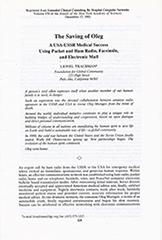 In April 1986 I saw the satellite photos of the Chernobyl nuclear power plant burning. I went to my Ham radio, and immediately, on 20 meters there was a big pile-up of European English speaking Hams trying to explain what was happening in Chernobyl to a Ukrainian ham in Kiev who didn't understand English. I jumped in "Break - Break" and started to explain in Russian!
In April 1986 I saw the satellite photos of the Chernobyl nuclear power plant burning. I went to my Ham radio, and immediately, on 20 meters there was a big pile-up of European English speaking Hams trying to explain what was happening in Chernobyl to a Ukrainian ham in Kiev who didn't understand English. I jumped in "Break - Break" and started to explain in Russian!  I asked what he knew about this and he replied "We know absolutely nothing about this." The Communists in Moscow had chosen to hide this from the people allowing thousands to be exposed and die. By Ham radio, the truth was finally out. I want to think that me getting the word out early, helped save some people's lives. The rest is history.
I asked what he knew about this and he replied "We know absolutely nothing about this." The Communists in Moscow had chosen to hide this from the people allowing thousands to be exposed and die. By Ham radio, the truth was finally out. I want to think that me getting the word out early, helped save some people's lives. The rest is history.
![]()
After I left the USSR, the only contact I had with Russia was Ham radio. It was very unlikely that I would ever be allowed back in Russia. With Gorbachev's reforms that all changed. 1991 I was able to travel to Russia to explore business opportunities. It was well timed since Romeo was preparing for his upcoming DX-pedition. Suddenly, the Communist hardliners' pro-military coup took place in August of 1991. I am sure you have read my QST story, on the R.A.R.C. web site and tonight's hand-outs about how the Hams of Russia moved and worked together to fight against the coup. You had heard what Phil had to say on the subject. I did play my part and I'm proud to have kept UA3A/NT2X on the air from Moscow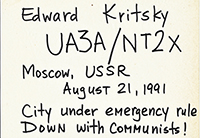 connecting to the outside world and relaying info all over Russia. Back in the USA, a friend of ours told me that radio transmission recordings we made were sent to the U.S. Department of State, where they were very much interested in learning what was happening in Russia.
connecting to the outside world and relaying info all over Russia. Back in the USA, a friend of ours told me that radio transmission recordings we made were sent to the U.S. Department of State, where they were very much interested in learning what was happening in Russia. 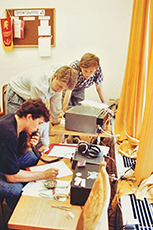 International phone lines were cut off during the coup. We were determined to stay on the air as long as we could, along with R3A operating from the Russian Parliament building. This was an earthquake - it shook the world. It was a bit nerve wracking, sleepless time, full of great risk of life and stress. But, the coup failed and the entire story is now history!
International phone lines were cut off during the coup. We were determined to stay on the air as long as we could, along with R3A operating from the Russian Parliament building. This was an earthquake - it shook the world. It was a bit nerve wracking, sleepless time, full of great risk of life and stress. But, the coup failed and the entire story is now history!
![]()
Phil: Before leaving on a solo trip to Moscow hosted by Andy Chesnokov, UA3AB, Ed phoned and asked me to stop by his home. He handed me a package and told me to deliver this to Andy, that it was emergency medicine and documentation that was needed badly in Russia and must be delivered. It was the winter of 1993. I left JFK, landed in Amsterdam and took my flight to Moscow. Arriving at Andy's apartment, I found it very typical of small three room apartments in Russia. The Ham station was set up in a corner of the living room. Andy had a tri-band beam on the roof and a new Yaesu transceiver. Andy invited me to use his station. I put R3/WB2DHY on the air from Moscow. I was a rare prefix, the only R3 in the world. CQ on 20 CW, the pile-up built fast. I was featured on Packet Radio DX Clusters everywhere. It was a different experience operating from Russia being the DX station. It seemed so odd to turn the beam south to work Africa. Stations from all over Europe were blasting in. I had to often dig the U.S. and VE stations out of the noise! The real surprise was the number of JA's from Japan calling. The pile up was amazing and Andy suggested I work split and I did - it helped a lot. Stations were from VU India and that entire region of the world, many stations from different regions of Russia. I think I spent quite a few hours just running one station after another. It was a tremendous feeling of satisfaction, joy, excitement and fulfillment to be a rare DX station dispensing QSO's by the hundreds. You might wonder why Hams risk life and limb to travel to rare dangerous places to operate a DX-pedition stations. Until you experience the incredible euphoria that comes with such operations, it is very difficult to comprehend why Hams go to islands with only coconut and palm trees or a frozen tundra with penguins and sea lions. Knowing I was going to have a Ham station at my disposal, with telephone to the United States most times non-existent, I had previously arranged a sked with my two children. They were at Rick, KC2FD's home. The sked worked perfectly. I was in Moscow having a chat with my two children in NY, spanning eight time zones. I've been always grateful for Rick, KC2FD's effort in helping my children speak to their Daddy so far away!
![]()
Ed: Nothing was more challenging than putting a Ham station together in the USSR before 1991. Transmitters and communication-grade receivers were not for sale. Here's the kind of stations you could find in Russia.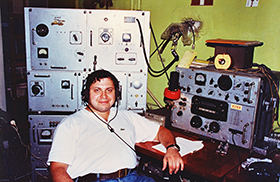 You needed to find Government surplus equipment made available by DOSAAF clubs. Some radio equipment was post WWII surplus. Many Hams built Transverters using great radios like the R250 and other models. This great Military R250 Receiver
You needed to find Government surplus equipment made available by DOSAAF clubs. Some radio equipment was post WWII surplus. Many Hams built Transverters using great radios like the R250 and other models. This great Military R250 Receiver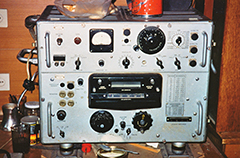 could be powered off 24 volts, 110 volts and 220 volts. The USSR and all of the European power grids were 220V, how come 110? Russian military communications equipment was designed to work in the United States, in case the Russian military landed and established a foothold. Russian radios would be ready to be used with the "enemy's power." However, it remained just wishful thinking.
could be powered off 24 volts, 110 volts and 220 volts. The USSR and all of the European power grids were 220V, how come 110? Russian military communications equipment was designed to work in the United States, in case the Russian military landed and established a foothold. Russian radios would be ready to be used with the "enemy's power." However, it remained just wishful thinking.
![]()
In the 1970's and 80's Russian Hams quietly built radios and quietly sold them to others. The Soviet government frowned on this, but could do nothing. They wanted to control everything and everyone who had radio equipment. Maybe some of you have heard of Russian hams using equipment named after the Russian Hams who designed them, UW3DI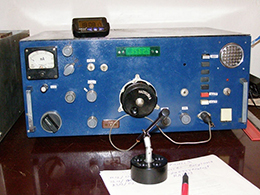 and RA3AO.
and RA3AO.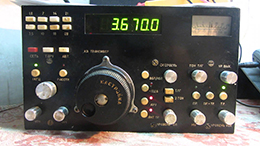 My dear friend, Jacob Lapovok, UA1FA worked at a large Leningrad Science Research facility designing Russian military equipment.
My dear friend, Jacob Lapovok, UA1FA worked at a large Leningrad Science Research facility designing Russian military equipment. 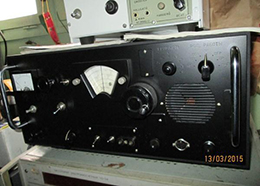 We met in 1976 but because of his work, he could not continue our friendship after I left Russia. He was not allowed to be in contact with anyone in the United States. We did resume our friendship after he retired in 1990. Jacob is on the right here with George UA1DZ.
We met in 1976 but because of his work, he could not continue our friendship after I left Russia. He was not allowed to be in contact with anyone in the United States. We did resume our friendship after he retired in 1990. Jacob is on the right here with George UA1DZ.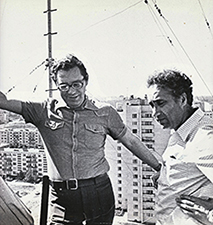 He and his other friend George, UA1AB designed and built many transceivers that operated in CW and SSB using easier parts to get in Russia. They helped many Russian Hams get on the air. Believe it or not, the first transceiver I ever laid my eyes on. It was made in 1975 by UA1FA and is still working at the club station in St. Petersburg. One of the most interesting Russian military surplus rigs was called "Plamya" in Russian, which means "Flame." It was a Navy submarine transmitter that put out 10KW.
He and his other friend George, UA1AB designed and built many transceivers that operated in CW and SSB using easier parts to get in Russia. They helped many Russian Hams get on the air. Believe it or not, the first transceiver I ever laid my eyes on. It was made in 1975 by UA1FA and is still working at the club station in St. Petersburg. One of the most interesting Russian military surplus rigs was called "Plamya" in Russian, which means "Flame." It was a Navy submarine transmitter that put out 10KW. 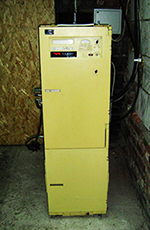 It had several big tubes and was designed to work until all the tubes burnt out!
It had several big tubes and was designed to work until all the tubes burnt out!
![]()
The authorities limited the First Category station power to 200 watts, but serious DXers or contesters rarely followed the law. The famous "200 Russian watts" may have looked like this. Ain't this an eye candy? But of course, not everyone exceeds power limits.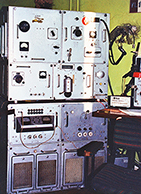
![]()
The world-wide electronic industry was allowed to offer Ham gear after the 1990's. By then, the DOSAAF faded into oblivion and the CRC stopped dictating policy. Russia changed dramatically and so did its Ham radio. There were some drawbacks. As real estate became private holdings and more valuable, most Ham radio clubs were forced to close and leave their buildings. DOSAAF was replaced by SRR the "Union of the Russian Amateurs" whose first president was my friend, now a SK, Larry, UA6HZ who also held the American call N2WW 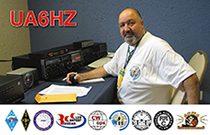 The SRR has made many positive changes in Russian Ham radio, but the one thing that has not changed is the CW code license requirement.
The SRR has made many positive changes in Russian Ham radio, but the one thing that has not changed is the CW code license requirement.
![]()
Possessing foreign currency was no longer a crime. Meeting foreigners no longer immediately put Russian citizens under suspicion. With the split of the USSR, their ITU callsign letters assignment system have changed yet again, divided between former Soviet republics without any concern for the hams.  Mailing cards to DXers abroad was no longer an issue. Callsign databases and Russian Callbooks with full owner names and addresses saw the light. The SRR has done a lot of good things for the Russian hams. I don't have all of the details, but they now have a callsign system with 1x2 and 2x1 calls for their First Class licensees, has gotten them privileges in 1KW legal power, permits to operate mobile from the vehicles, remote rig internet access, established a working QSL bureau system after the Perestroika.
Mailing cards to DXers abroad was no longer an issue. Callsign databases and Russian Callbooks with full owner names and addresses saw the light. The SRR has done a lot of good things for the Russian hams. I don't have all of the details, but they now have a callsign system with 1x2 and 2x1 calls for their First Class licensees, has gotten them privileges in 1KW legal power, permits to operate mobile from the vehicles, remote rig internet access, established a working QSL bureau system after the Perestroika.
Currently, Russian hams have 2 'licenses': one records your assigned call and license class, and another registers the radio or radios you own - with brands and serial numbers recorded. You cannot legally operate your home station unless this is a part of your station documentation. The state still wants its control over the radio waves.
Oil wealth and higher gas prices of the 2000's had a positive impact on the Russian citizens overall. Money flowed into Russia, earnings went up and many RU hams went abroad on their own, doing the coveted DXpeditions and contest operations. Some wealthy guys even bought QTHs in places like EA8, Canary Islands and built contesting stations. I was once on the air in 2010 from New York and had a string of UA9K, UA9L and UA9J in northern Russia call me in rapid succession. Every one was loud and everyone had a very well equipped station - big antennas, tall towers, latest rigs and amps. It was amazing, what happened in the UA9 region? And then it dawned on me - this was oil money. Some of it trickled down to regular guys working for the big oil companies in that part of the country. It was too obvious. What a fine illustration of what was happening in the entire country in the early days of Russian capitalism in the 21st century.
After notable political events Russia was involved in 2014 and thereafter the above trend had reversed itself. Lots of western companies left, and the wealth went with them. I will leave it at that for now, this page in the Book of History is being written as we speak.
![]()
Phil: Back in New York getting ready for another trip with Ed to Russia. Ed phoned me excitedly. He had been in touch with the ARRL. They acted as liaison with the FCC. Permission was granted for Ed and me as ARRL-VECs to give the first American Ham Radio examinations to Russian Hams in Moscow. 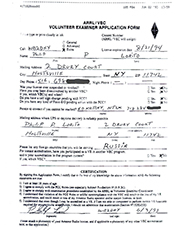 The FCC would issue call signs if they passed. The Ministry of Radio, Television and Communications of the Russian Federation, in cooperation with the United States, wanted to learn about the American Volunteer Examination program - its preparation, support and study system and everything else. Ed and I sent study material to Russia covering all classes of Ham licenses. In Moscow, on June 15th, 1993 at 5:00 p.m. local time, Ed and I started administering the examinations to 11 Russian hams under the very close and careful watchful eye of representatives from the Ministry of Radio, Television and Communications of the Russian Federation.
The FCC would issue call signs if they passed. The Ministry of Radio, Television and Communications of the Russian Federation, in cooperation with the United States, wanted to learn about the American Volunteer Examination program - its preparation, support and study system and everything else. Ed and I sent study material to Russia covering all classes of Ham licenses. In Moscow, on June 15th, 1993 at 5:00 p.m. local time, Ed and I started administering the examinations to 11 Russian hams under the very close and careful watchful eye of representatives from the Ministry of Radio, Television and Communications of the Russian Federation. 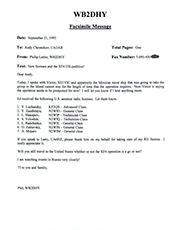 All 11 passed the 5 WPM code test, Novice Exam, Technician exam, 13 WPM code test, 20 WPM code test and all but one passed the Advanced exam. Giving an hour to conduct the exams, we had 10 successful Advanced Class candidates and one General with a 20 WPM CSCE. Ed and I were disappointed feeling we didn't have time to administer the Extra exam. The process was a resounding success. The Ministry of Radio, Television and Communications of the Russian Federation adopted the American VEC method of licensing new hams in the new Russia. This method is still in effect today in Russia. Ed helped change the old Russian licensing process that so broke his teenage dreams and heart. It was abolished!
All 11 passed the 5 WPM code test, Novice Exam, Technician exam, 13 WPM code test, 20 WPM code test and all but one passed the Advanced exam. Giving an hour to conduct the exams, we had 10 successful Advanced Class candidates and one General with a 20 WPM CSCE. Ed and I were disappointed feeling we didn't have time to administer the Extra exam. The process was a resounding success. The Ministry of Radio, Television and Communications of the Russian Federation adopted the American VEC method of licensing new hams in the new Russia. This method is still in effect today in Russia. Ed helped change the old Russian licensing process that so broke his teenage dreams and heart. It was abolished! 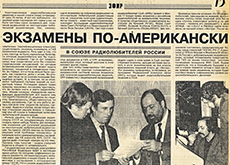 This was big news for Hams in Russia. Ed, NT2X built a bridge of commonality that still exists between American and Russian Hams. It's the test! The only sad exception is that the U.S. dropped the Morse Code requirement from its testing.
This was big news for Hams in Russia. Ed, NT2X built a bridge of commonality that still exists between American and Russian Hams. It's the test! The only sad exception is that the U.S. dropped the Morse Code requirement from its testing.
![]()
Ed told me I was invited to meet Musa Manarov, U2MIR. So, who is Musa? 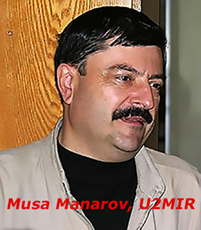 He is one of the most highly respected Russian Cosmonauts. He spent so much time in space, absorbed so much radiation that he was forced to retire from Cosmonaut duty. At that time, he held the record for the longest continuous time in space. In the new Russia, he had been elected to the Duma which is like our U.S. Congress. We arrived at his Moscow apartment. He was a very friendly, warm, sociable person you immediately liked. We shared snacks and a few vodka shots. He had served in the Russian Air Force, flew combat missions in Afghanistan.
He is one of the most highly respected Russian Cosmonauts. He spent so much time in space, absorbed so much radiation that he was forced to retire from Cosmonaut duty. At that time, he held the record for the longest continuous time in space. In the new Russia, he had been elected to the Duma which is like our U.S. Congress. We arrived at his Moscow apartment. He was a very friendly, warm, sociable person you immediately liked. We shared snacks and a few vodka shots. He had served in the Russian Air Force, flew combat missions in Afghanistan.  He left the Air Force at the rank of Colonel and became a Cosmonaut. He showed us his scrapbook with photos of him in the cockpit of his Mig fighter. He was in orbit, in the Russian space craft MIR at the time of the first Gulf War when Saddam Hussein's army invaded Kuwait.
He left the Air Force at the rank of Colonel and became a Cosmonaut. He showed us his scrapbook with photos of him in the cockpit of his Mig fighter. He was in orbit, in the Russian space craft MIR at the time of the first Gulf War when Saddam Hussein's army invaded Kuwait. 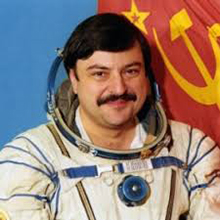 He showed us photos he took of Kuwait from space. You could see hundreds of yellow and orange dots, oil wells set on fire by Hussein's army. Musa was part of a team of Russian Cosmonauts who traveled to Houston in an exchange program to train with American Astronauts for future joint space operations. He told us how the Americans showed him a ball point pen that was developed by NASA which would write in space, a weightless environment. Ball point pens fail if you try to write upside down. Gravity needs to pull ink into the ball. The American electronic pen wrote perfectly upside down and in weightless space. Something NASA took pride in having developed. Musa asked, "How much did it cost to develop this pen." He was told it was a 25 million dollar research and development project. Musa replied, "That's a lot of money. We use pencils." The American Astronauts couldn't stop laughing!
He showed us photos he took of Kuwait from space. You could see hundreds of yellow and orange dots, oil wells set on fire by Hussein's army. Musa was part of a team of Russian Cosmonauts who traveled to Houston in an exchange program to train with American Astronauts for future joint space operations. He told us how the Americans showed him a ball point pen that was developed by NASA which would write in space, a weightless environment. Ball point pens fail if you try to write upside down. Gravity needs to pull ink into the ball. The American electronic pen wrote perfectly upside down and in weightless space. Something NASA took pride in having developed. Musa asked, "How much did it cost to develop this pen." He was told it was a 25 million dollar research and development project. Musa replied, "That's a lot of money. We use pencils." The American Astronauts couldn't stop laughing!
![]()
Visiting the Volgograd Amateur Radio Club, EW4AA was amazing. Our VERY warm greeting by dozens of Russian hams was fantastic. When Ed and I arrived the entire club's business, it's usual meeting was cancelled and all attention was on Ed and me. We were treated to snacks and drinks, invited to operate their Ham station. That is depicted in the photos in the frame. They insisted we both sign on the air as R4/WB2DHY (the 4 area is Russia's South just like in the USA) and RV7AA. We were honored to do so. I was asked to place one of my QSL cards on their wall but I had no QSL cards with me. So the President of the club insisted I write my call letters on the wall with a felt pen and sign my name. I did that to a standing ovation! An older ham asked me into a room that contained many pieces of radio gear, like a Russian Ham radio museum. He was very excited and opened a glass case and took out a large military field radio. 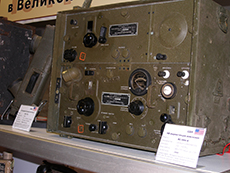 He told me this was one of the thousands of military radios the U.S.A. shipped to the Russian Army during WWII. He connected a battery to the radio power input, connected a wire to the antenna post and handed me the headset and said in Russian. "Listen!" I did and heard loud static. With great emotion he said, "See, it still works!" He pointed to a metal tag on the radio unit. It said, "BC-654-A, Crosley Corporation, Cincinnati, Ohio." He then said, "Made in America. These radios helped Russia win the war!" By the way, sitting next to the BC-654-A was a vintage American WWII U.S. Army "Walkie Talkie" and that still worked as well.
He told me this was one of the thousands of military radios the U.S.A. shipped to the Russian Army during WWII. He connected a battery to the radio power input, connected a wire to the antenna post and handed me the headset and said in Russian. "Listen!" I did and heard loud static. With great emotion he said, "See, it still works!" He pointed to a metal tag on the radio unit. It said, "BC-654-A, Crosley Corporation, Cincinnati, Ohio." He then said, "Made in America. These radios helped Russia win the war!" By the way, sitting next to the BC-654-A was a vintage American WWII U.S. Army "Walkie Talkie" and that still worked as well.
![]()
Long Island, New York - 1994. Arrangements were made for six Russian Ham radio operators to be hosted by American hams while touring the U.S., their first visit to America. The plan called for them to be hosted in New England first. Their Connecticut host would drive them very early in the morning to the ferry in New London Connecticut where they would cross the Long Island Sound. Ed and I would pick them up at Orient Point, Long Island and bring them to my house for breakfast. Before we could leave we got a phone call that they missed the ferry and would take the next in an hour. The Connecticut Ham host, not knowing how to kill time with six Russians in his Van, decided to give them a tour of the U.S. Navy Nuclear Submarine Base in New London, Connecticut. 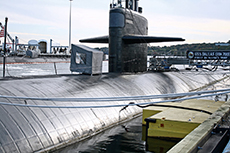 At a time before 9/11, he was able to drive right into the base. This completely freaked the Russians out! Here were six Russian nationals, in total shock, driving dockside past a row of over 15 U.S. Navy Nuclear Submarines. They were convinced at any moment machine gun fire would burst out and kill them all. They thought the driver was out of his mind and wanted to commit suicide. The driver stopped and they all got out of the Van, scared to death of being shot dead any second. Thinking about making a run for it!
At a time before 9/11, he was able to drive right into the base. This completely freaked the Russians out! Here were six Russian nationals, in total shock, driving dockside past a row of over 15 U.S. Navy Nuclear Submarines. They were convinced at any moment machine gun fire would burst out and kill them all. They thought the driver was out of his mind and wanted to commit suicide. The driver stopped and they all got out of the Van, scared to death of being shot dead any second. Thinking about making a run for it! 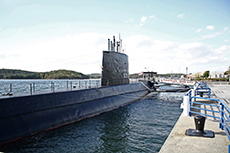 Later, they told me they were standing so close to the submarines they could have reached over and touched them! Finally, they got back in the van and couldn't get out of the naval base fast enough! At our home, sitting in our kitchen while my XYL, Louisa, KB2NKQ was making pancakes, sausages, eggs and coffee, they couldn't stop talking about their U.S. Nuclear Submarine adventure and telling us jokes and ridiculing their old Soviet government. I recall, very clearly, standing in the kitchen and Louisa saying to me, "Ask me if I would have married you if you told me I would be making breakfast one morning in my kitchen for six crazy Russian Ham radio operators?" I couldn't stop laughing and neither could she. For Louisa and me it was greatest fun and the most memorable breakfast we will ever have in our lives. Ed took it all in stride and was just laughing along with all of us! It was just so great! By the way, the two subs shown are the USS Nautilus the first ship to ever report its position as 90-north on August 3rd, 1958. Also, the USS Dallas which was featured in the US / Russian submarine drama film "Red October." The Dallas was the first U.S. nuclear submarine ever engaged in actual combat. Used by the United States Navy as a Cruise Missile launching platform in the first Gulf War. Both are at permanent berths in New London.
Later, they told me they were standing so close to the submarines they could have reached over and touched them! Finally, they got back in the van and couldn't get out of the naval base fast enough! At our home, sitting in our kitchen while my XYL, Louisa, KB2NKQ was making pancakes, sausages, eggs and coffee, they couldn't stop talking about their U.S. Nuclear Submarine adventure and telling us jokes and ridiculing their old Soviet government. I recall, very clearly, standing in the kitchen and Louisa saying to me, "Ask me if I would have married you if you told me I would be making breakfast one morning in my kitchen for six crazy Russian Ham radio operators?" I couldn't stop laughing and neither could she. For Louisa and me it was greatest fun and the most memorable breakfast we will ever have in our lives. Ed took it all in stride and was just laughing along with all of us! It was just so great! By the way, the two subs shown are the USS Nautilus the first ship to ever report its position as 90-north on August 3rd, 1958. Also, the USS Dallas which was featured in the US / Russian submarine drama film "Red October." The Dallas was the first U.S. nuclear submarine ever engaged in actual combat. Used by the United States Navy as a Cruise Missile launching platform in the first Gulf War. Both are at permanent berths in New London.
![]()
I have spoken to many, many ordinary Russians, both Hams and non-Hams on all my Russain trips. Government officals and one full-fledged member of the Communist Party aside, they all viewed Americans with great respect, admiration, and in many cases real affection. To sum it all up, one of my favorite comments told to me was, "America has the only exportable culture in the world. Russians don't want Japanese, English, or Spanish culture. We love and want American culture. America gave us Mickey Mouse, Donald Duck, Rock 'n' Roll, Elvis Presley, Hot Dogs, Coca-Cola, Jazz, Clint Eastwood, Humphrey Bogart, Wrangler blue jeans and SUV's. We love America, we love Americans." The one thing that was very obvious and a very common theme with every Russian non-government person I met was the tremendous dislike and hatred for the Communists. There were constant remarks of criticism and the Communist government was the subject of jokes. Southern Russians whose resources, especially agricultural went to Moscow's "Black Hole," nothing of quality of life betterment or value was ever given back to the people of southern Russia. This was a repeated theme throughout Russia. Over the many years, I reflected back on my Russian journey and so wish that every American could have been at my side. These were moments when one's heart would burst with pride to be an American in Russia.
![]()
Ed: Politicians and regimes come and go, but our beloved hobby and service endures. Interesting and important world events echo right here, on our Ham bands. We can be witnesses and participants to history. The stories Phil and I have and which unfolded before you tonight are just small examples of what we, the Hams of the world, are capable of. Please get involved, locally or internationally, write your own stories and it will be a great movie called "My Life in Amateur Radio" and you will have something important and special to tell your grandchildren. Thank you very much for listening and watching our Presentation.
73 and be well.
The following are photos taken in the HQ of the Russian Amateur Radio Emergency Service (RARES) in Moscow. Rick Palm, K1CE of the American Radio Relay League traveled to Russia in the early 1990's, at Ed's urging, and was very instrumental in developing and organizing RARES. His work and effort had a significant impact on getting this amateur radio emergency system operational. His program and suggestions, reflective of America's ARES is still the exact viable methodology used in Russia to this day. Over the decades it has served to save lives and expedite aid to areas befallen by both man made and natural catastrophes throughout Russia. The Russian Amateur Radio Emergency Service has integrated well into the Russian Federation's vast emergency response assets.
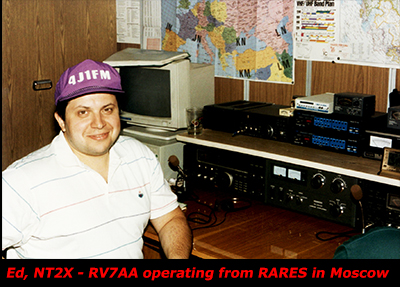
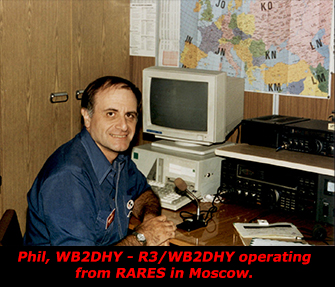
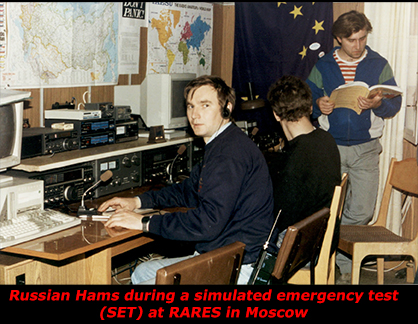
It was vitial to keep Ed, NT2X on the air!

The hard line Communist and KGB under estimated the resourcefulness and level of motivation within the Russian Ham radio community. Cutting electric power and outgoing phone lines was fruitless.
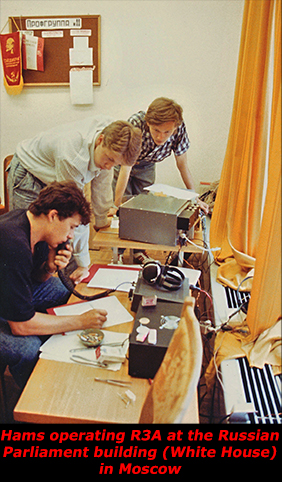
![]()
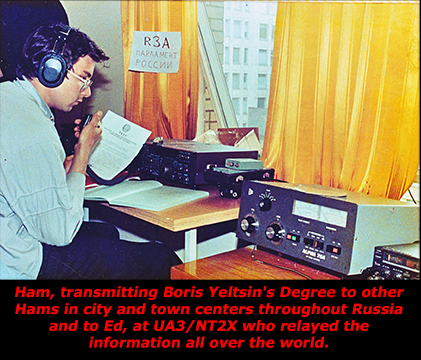
![]()
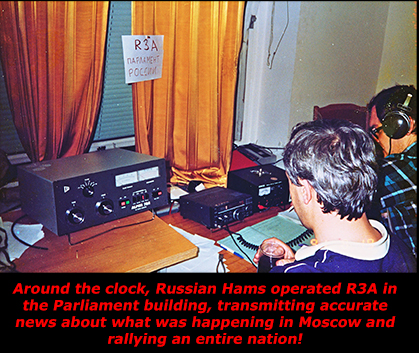
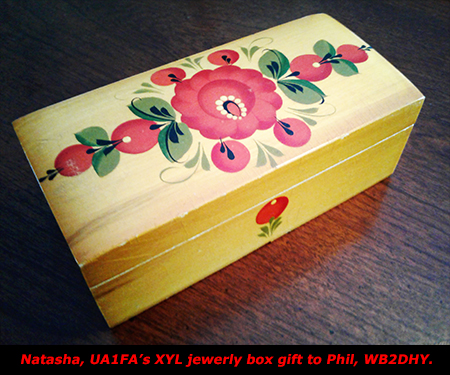
The following photos were taken during our visit to the Volgograd Radio Club, EW4AA. To the members who gave us the very warmest welcome - 73 and Bol'shoye spasibo!
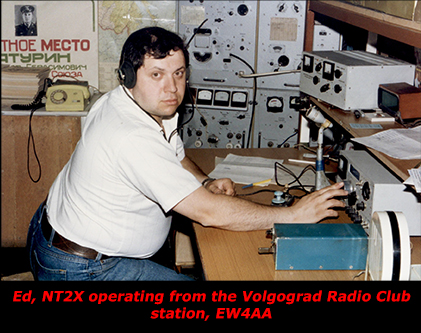
![]()
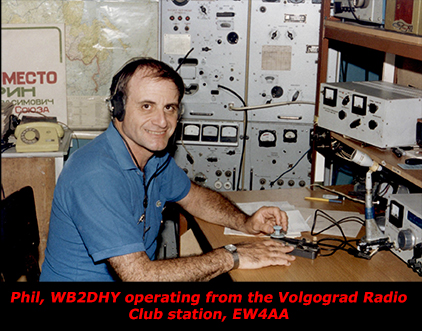
![]()
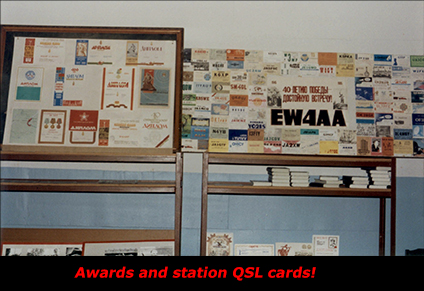
![]()
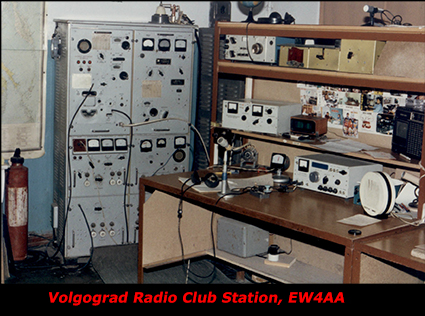
This is the current state of the art QSL bureau in St. Petersburg, Russia maintained by Vlad, RV1CC and other!
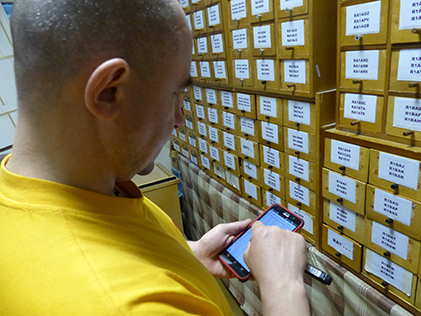
![]()
